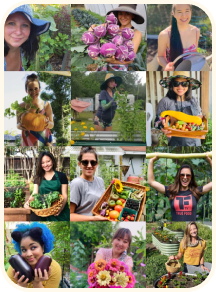Edible Landscaping: Fusing Aesthetics and Functionality in Your Garden
Imagine a garden that is not only a feast for the eyes but also for your taste buds, combining the best of ornamental beauty and culinary delights.
This is essentially edible landscaping – incorporating edible plants, herbs, and vegetables into your outdoor space and turning it into a productive oasis.
Beyond the traditional garden, edible landscapes integrate vegetables, herbs, and fruits into lawns, garden beds, and among your ornamentals. The result is an aesthetically pleasing landscape that also provides a bountiful harvest for homemade meals and more.
Why edible landscapes?
Having edible landscapes not only allows you to literally enjoy the fruits of your labor, it also helps promote biodiversity and sustainable gardening. Growing your own vegetables encourages self-reliance - with ingredients for your homemade meals readily available from the backyard. Adding edible plants to your garden will attract beneficial insects as well, ensuring a healthier ecosystem.
Designing your own

Now, you are ready to make a start. But first, take some time to evaluate your garden space, climate and sunlight patterns, as well as soil quality. Check for the best spots to start growing edibles, with consideration of sun and water access for different types of plants.
Next, set specific goals. Do you care more about aesthetics, or are you aiming to boost the functionality of your garden? Do you already have specific vegetables or herbs that you want to add? Design your edible landscape with your goals in mind, and in such a way that they can be achieved with ease.
Soil is the foundation of all gardens, so start by testing your soil quality and nutrient content. You can add fertilizers, compost or rotted manure to boost drainage and fertility.
Choose plants that match the available space and growing conditions in your garden, as well as ones that complement your existing plants in terms of growth patterns, pest resistance and harvest times. These may be a mix of vegetables, herbs or edible flowers that grows well together.
Here are some recommendations to help you make a start with ease.
Combining edible flowers and vegetables
One of easiest combinations you can start with is to combine edible flowers and vegetables. A tried and tested combination is zucchini, calendula and sunflowers. Add the distinctive and bright colored calendula flowers in salads, and use your sunflowers to provide shade and support for the zucchini plant.
Three sisters

Corn, winter squash and beans make up the classic three sisters. This planting technique is native American in origin, and aims to maximize space and garden resources. Winter squash serves as living mulch to suppress weeds, while your corn acts as a natural trellis for beans to climb and grow.
Vegetables, herbs and flowers
You may want to take it a step further by incorporating vegetables, flowers and herbs altogether. A combination used by many gardeners is basil, tomatoes and marigolds. In this win-win relationship, basil helps deter pests that might harm your tomatoes, while marigolds also repel pests and attract beneficial pollinators at the same time.
Another winning tripartite is cucumbers, nasturtiums and dill. Nasturtiums act as a natural trap for pests like aphids, while dill flowers attract beneficial insects to help defend your crops.
Managing your edible landscape
Having a thriving and productive garden with edibles takes work and regular maintenance, so as to ensure good health and maximum productivity for your plants.
Regular maintenance will also help protect your crops from pests, weeds and diseases. With the right techniques, you will be glad to know that the beauty and abundance of nature’s bounty is being cultivated in your own backyard.
As your edible landscape grows, it is recommended to use organic fertilizers or compost to nourish your plants and soil from time to time. Water regularly and consider adding mulch to suppress weed growth and conserve moisture. Prune plants regularly to encourage healthy growth and prevent them from overcrowding.
To further maximize the growth of edible plants, consider using raised garden beds, containers, and trellises for climbing plants such as tomatoes. These additional elements should be based on your overall design, with careful consideration of both functionality and aesthetics.
You will appreciate your edible garden even more when it is time to harvest. Then, fully relish your edible plants by incorporating them into your meals and culinary creations!
There you have it. Edible landscaping is a great way to transform your garden into an oasis of productivity – with a sustainable supply of fresh homegrown produce. Make a start by blending your ornamentals with edibles, and cultivate a more functional garden that can be a source of joy all year round!





























Leave a comment